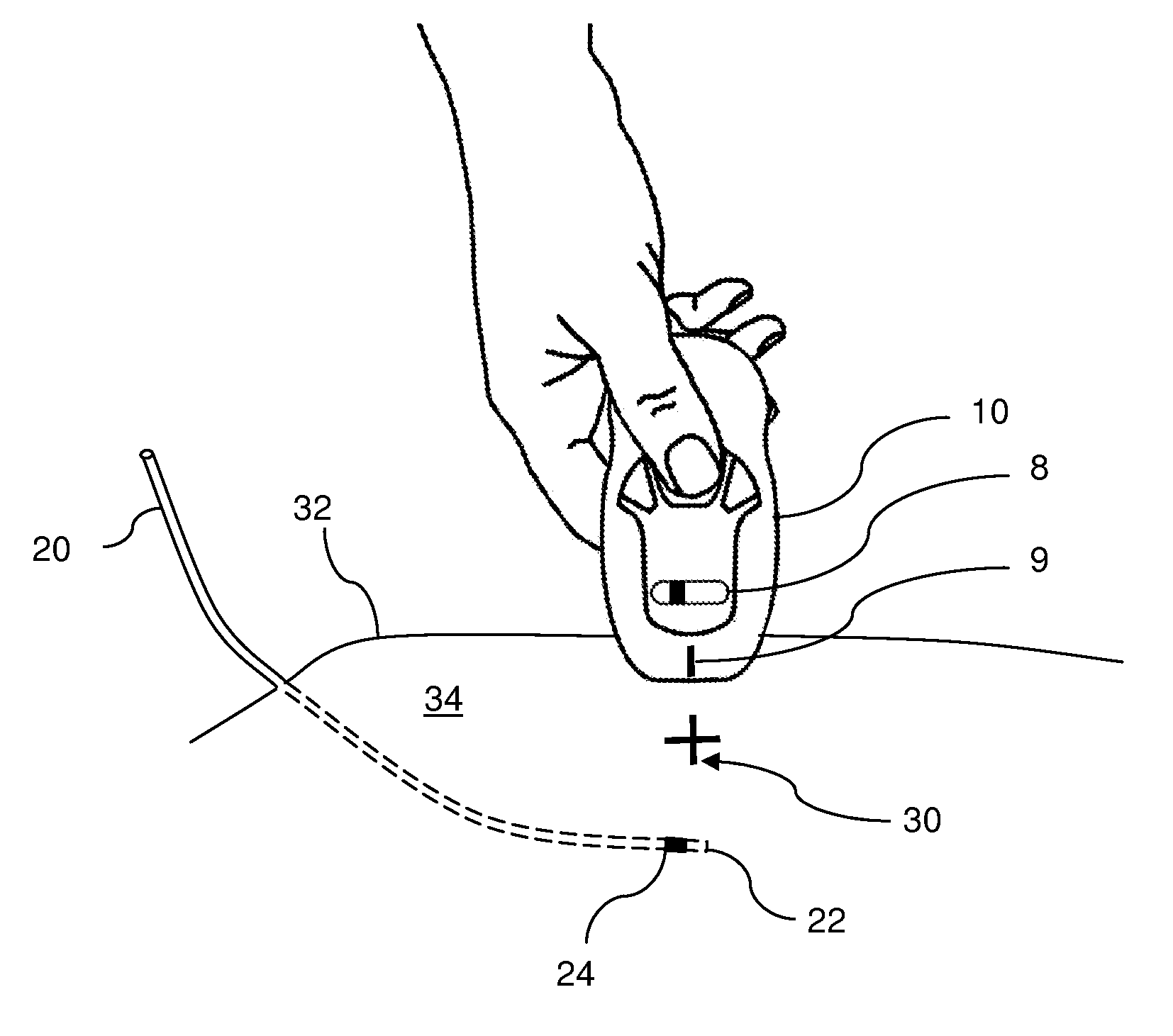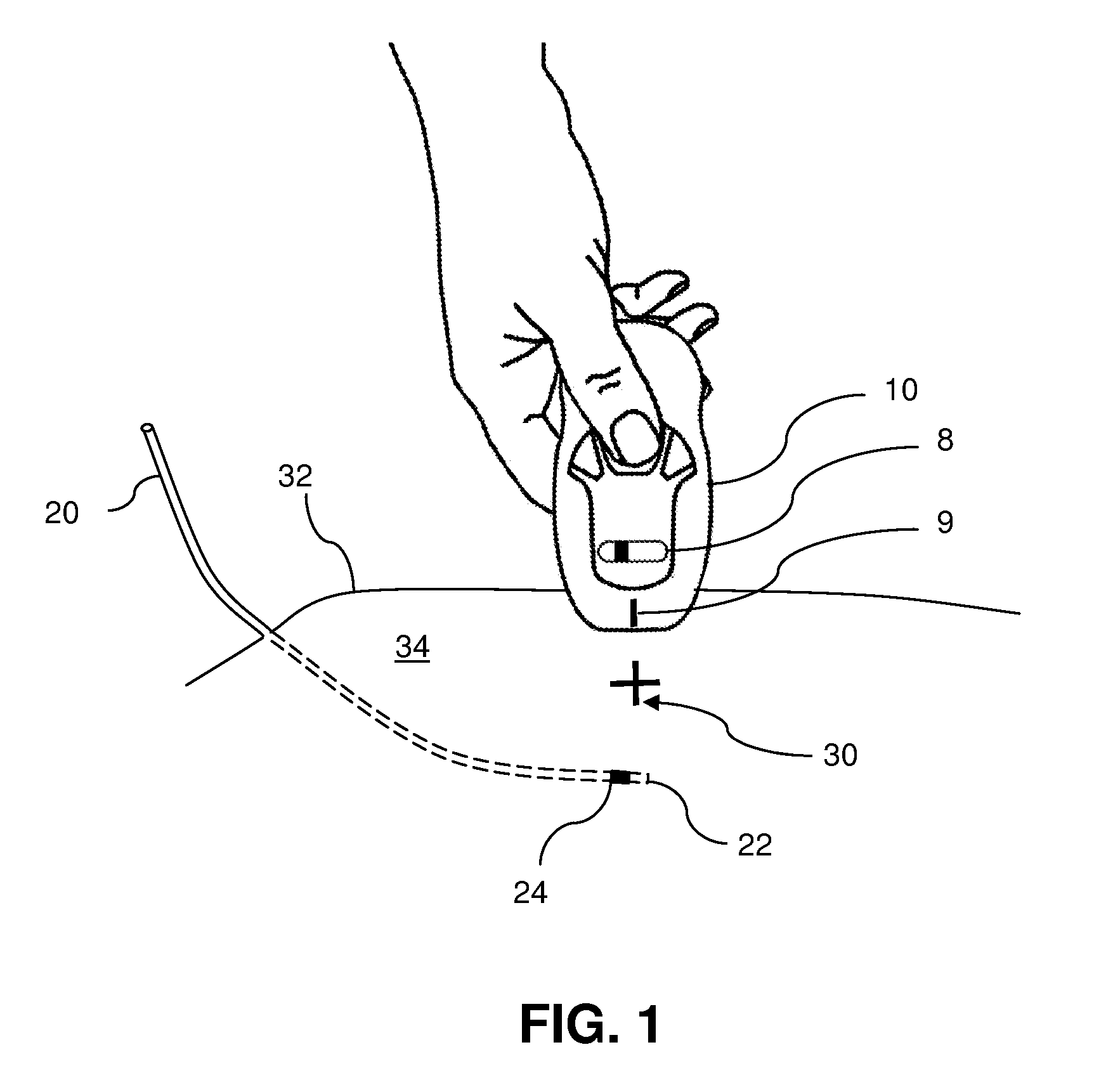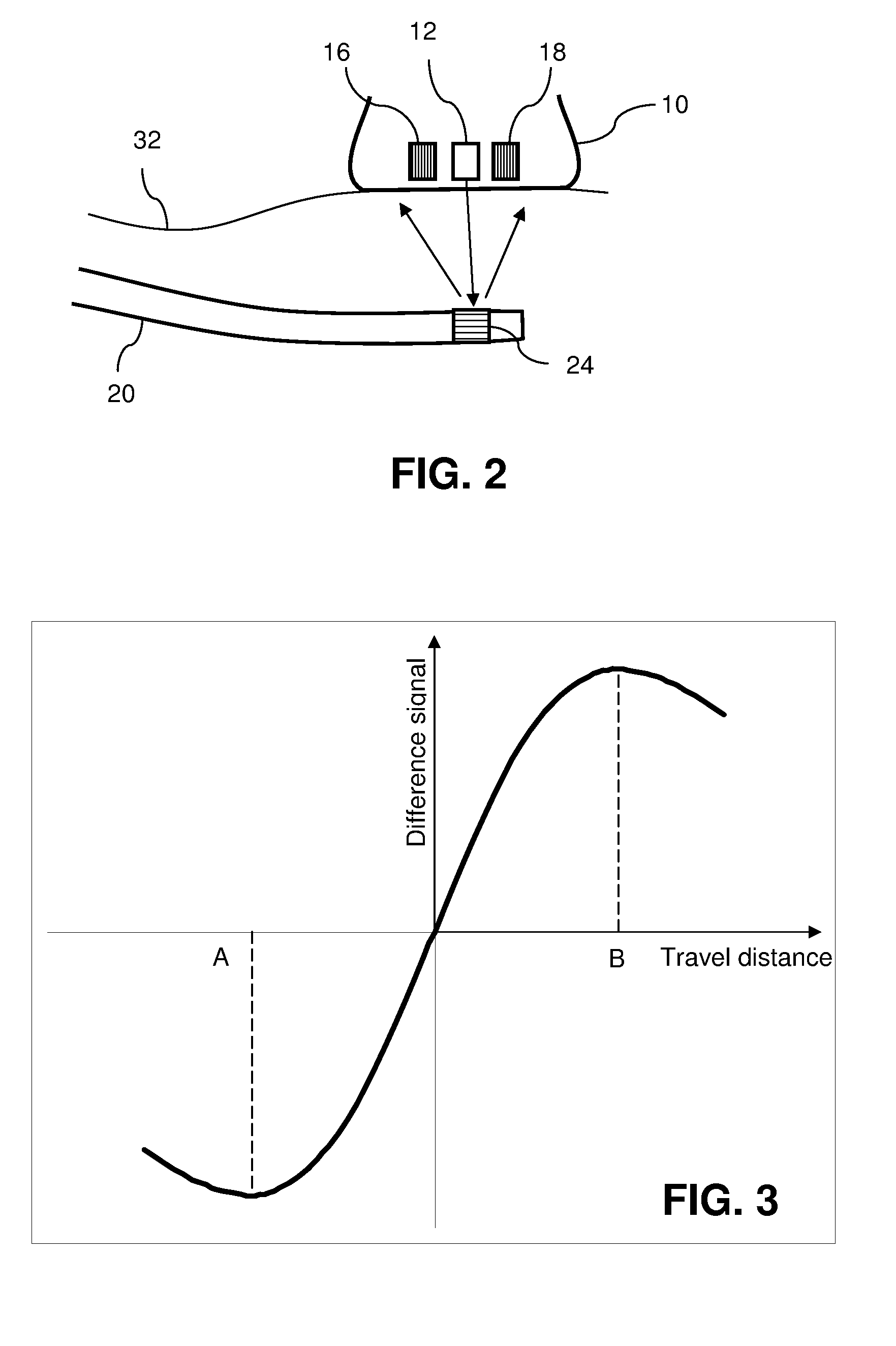System for optically detecting position of an indwelling catheter
a catheter and optical detection technology, applied in the field of quick, non-invasive, radiation-free devices, can solve the problems of limiting the ultimate effectiveness of x-ray radiation, affecting the patient's overall health, and requiring access inside the catheter
- Summary
- Abstract
- Description
- Claims
- Application Information
AI Technical Summary
Benefits of technology
Problems solved by technology
Method used
Image
Examples
first embodiment
[0030]FIG. 2 is a schematic view of the present invention in which a probe 10 includes a light emitter 12 and a pair of light detectors 16 and 18 positioned on both sides of the emitter 12 along a first axis aligned with the projected travel path of the catheter, preferably at an equal distance therefrom. The probe 10 is shown positioned over the optical marker 24 at the tip of a catheter 20. The light emitter 12 may be a light-emitting diode (LED) while the light detectors 16 and 18 may be photodiodes. Preferably, a high-speed high-power infra-red LED is used as a light emitter 12 while an integrated photodiode and amplifier is used as a light detector 16 and 18. To ensure the highest tissue penetration and the least absorption when passing through tissue, the range of wavelengths for the light emitter 12 is preferably selected to be from about 650 nm to about 900 nm. Shorter wavelengths may cause increased absorption by hemoglobin in blood while longer wavelengths may be absorbed ...
second embodiment
[0034]FIG. 4 is a schematic view of the optical probe 10 with a light emitter 12 and a linear array of light detectors including a first array of at least two light detectors 16 and 16′ on one side of the light emitter 12 and a second array of at least two light detectors 18 and 18′ on the other side of light emitter 12. The light emitter 12 and the light detectors 16, 16′, 18, and 18′ are placed along a probe axis formed as a straight line and oriented along a projected travel path of the catheter tip with the embedded optical marker 24.
[0035]There are several advantageous ways to utilize detector arrays of this embodiment. In one way, all detectors are turned on at all times during the catheter position identification process. Having more than one detector allows further reduction in noise and increase in accuracy of position detection. Alternatively, these detectors can be turned on and off at various stages of catheter detection procedure. At first, outside detectors can be turn...
third embodiment
[0036]FIG. 5 is a schematic view of the invention in which the probe includes a light emitter 12 and two transversely oriented pairs of the light detectors 16 and 16′ along a first axis as well as 18 and 18′ along a second axis. The first pair of detectors 16 and 16′ is preferably oriented along the projected travel path of the catheter tip with the optical marker 24, while the second pair of light detectors 18 and 18′ are placed on an axis orientated in the perpendicular direction. Detection of both magnitude and direction of travel of the optical marker 24 is carried out in the axial and lateral directions by comparing the current optical signals with the reference signals.
[0037]FIG. 6 shows the principle behind the detection of a two dimensional displacement of the catheter tip as the combination of two vectors corresponding to the axial and lateral displacements which are measured by transversally oriented pairs of light detectors with a light emitter 12 positioned in the center...
PUM
 Login to View More
Login to View More Abstract
Description
Claims
Application Information
 Login to View More
Login to View More - R&D
- Intellectual Property
- Life Sciences
- Materials
- Tech Scout
- Unparalleled Data Quality
- Higher Quality Content
- 60% Fewer Hallucinations
Browse by: Latest US Patents, China's latest patents, Technical Efficacy Thesaurus, Application Domain, Technology Topic, Popular Technical Reports.
© 2025 PatSnap. All rights reserved.Legal|Privacy policy|Modern Slavery Act Transparency Statement|Sitemap|About US| Contact US: help@patsnap.com



